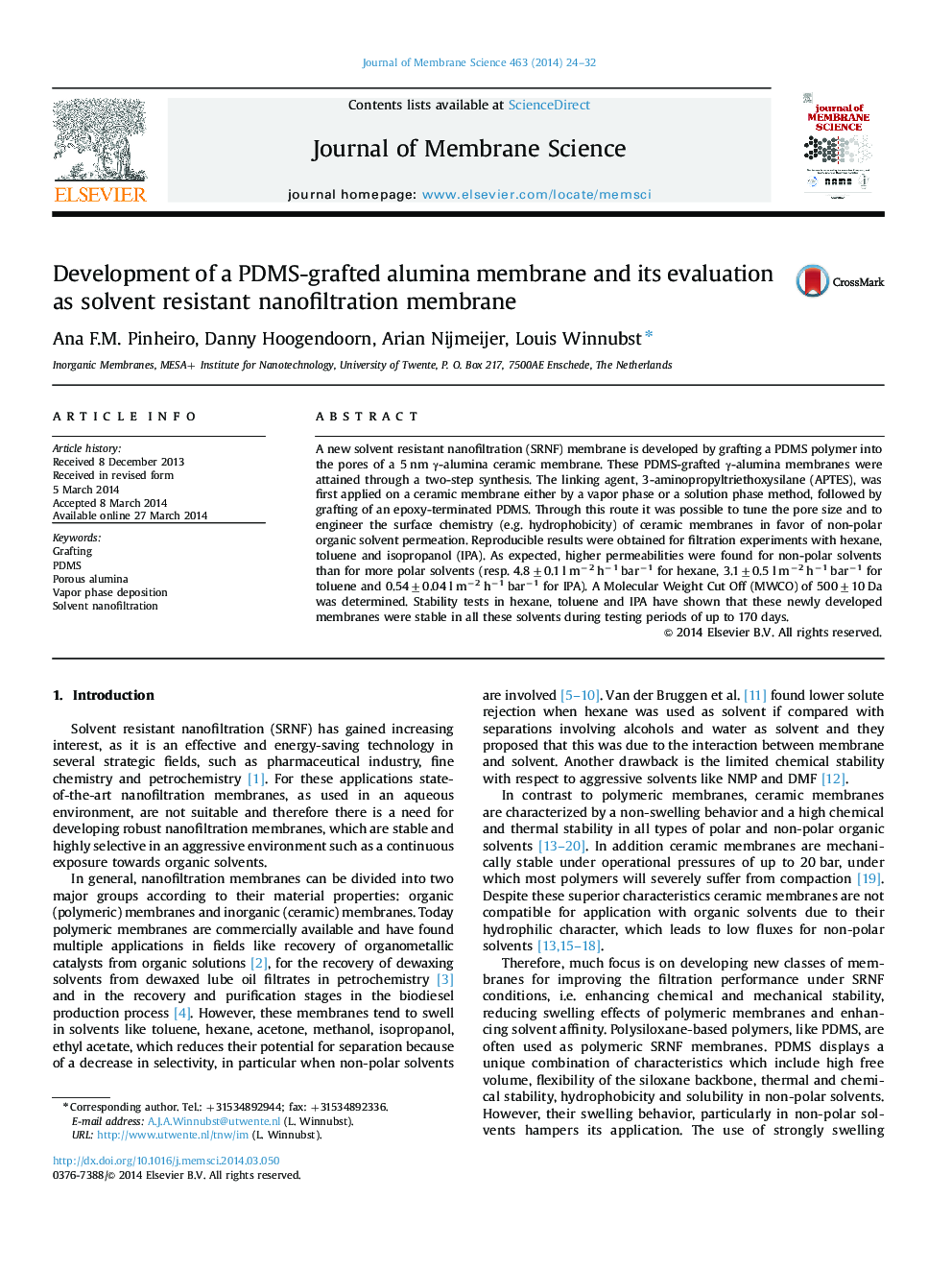| Article ID | Journal | Published Year | Pages | File Type |
|---|---|---|---|---|
| 633594 | Journal of Membrane Science | 2014 | 9 Pages |
•A method is described to tune the pore size and the surface chemistry of ceramic membranes.•A hydrophobic solvent resistant membrane is developed by grafting a PDMS layer on a ceramic γ-alumina membrane.•Reproducible and long-term stable flux values were obtained for toluene, n-hexane and iso-propyl alcohol.•Nanofiltration with Molecular Weight Cut Off (MWCO) values of 500 DA was achieved.
A new solvent resistant nanofiltration (SRNF) membrane is developed by grafting a PDMS polymer into the pores of a 5 nm γ-alumina ceramic membrane. These PDMS-grafted γ-alumina membranes were attained through a two-step synthesis. The linking agent, 3-aminopropyltriethoxysilane (APTES), was first applied on a ceramic membrane either by a vapor phase or a solution phase method, followed by grafting of an epoxy-terminated PDMS. Through this route it was possible to tune the pore size and to engineer the surface chemistry (e.g. hydrophobicity) of ceramic membranes in favor of non-polar organic solvent permeation. Reproducible results were obtained for filtration experiments with hexane, toluene and isopropanol (IPA). As expected, higher permeabilities were found for non-polar solvents than for more polar solvents (resp. 4.8±0.1 l m−2 h−1 bar−1 for hexane, 3.1±0.5 l m−2 h−1 bar−1 for toluene and 0.54±0.04 l m−2 h−1 bar−1 for IPA). A Molecular Weight Cut Off (MWCO) of 500±10 Da was determined. Stability tests in hexane, toluene and IPA have shown that these newly developed membranes were stable in all these solvents during testing periods of up to 170 days.
